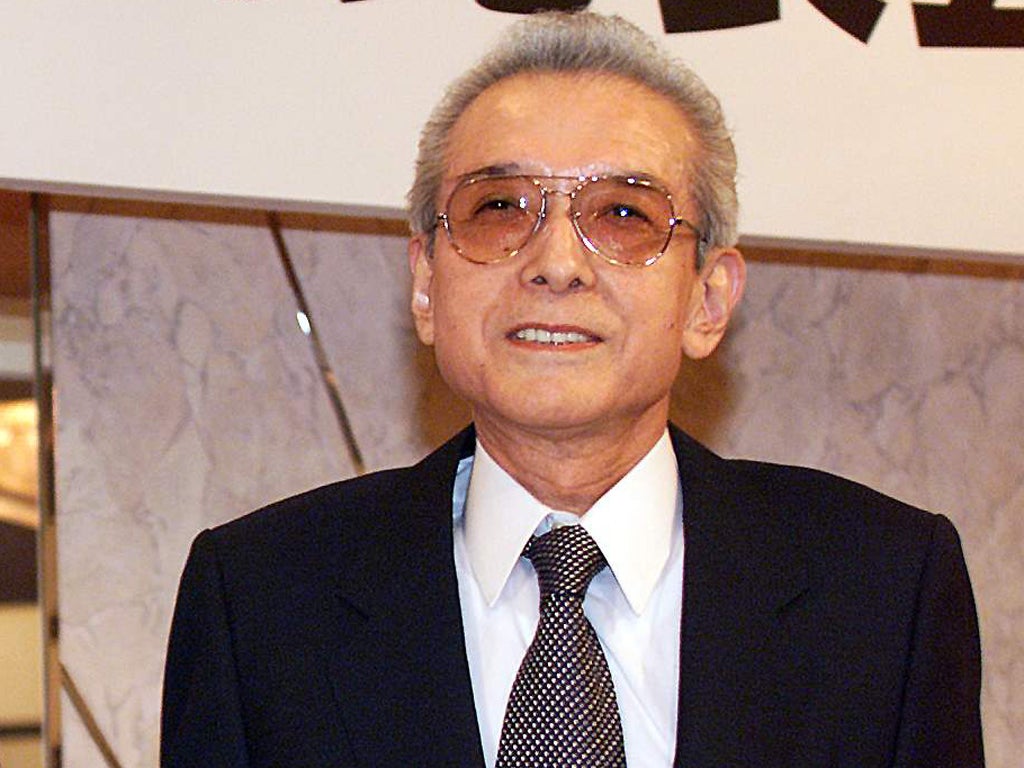Hiroshi Yamauchi: Computing pioneer who turned Nintendo into a global gaming giant
He bought the Seattle Mariners without seeing them play and knowing nothing about baseball

Hiroshi Yamauchi was the entrepreneur who turned his company Nintendo into an electronic gaming giant. During his more than half a century with the company, he transformed the focus of the business from old-fashioned card games to computer games, making it one of the best known brands in the world and one of Japan's richest companies.
Yamauchi was born in 1927 in Kyoto and studied at Tokyo's Waseda University. His family's Nintendo company was established in 1889 as a manufacturer of playing cards. Following the death of his grandfather, Sekiryo Yamauchi, in 1949, he took over the reins of the company, on condition that he would be the sole family member in control. When Yamauchi became president, Nintendo's main product was still hanafuda “flower cards”, used to play a number of popular games.
A decade later Nintendo entered into an agreement with Walt Disney to sell its playing cards in Japan. When these sold 600,000 packs in a single year, Yamauchi travelled to America to see what further possibilities there might be in the market. However, the company he visited, United States Playing Card Company, had only a modest office and factory and Yamauchi sensed that cards were not going to be the best future for Nintendo. Over the next two decades Nintendo expanded its range of business activities, experimenting with bowling alleys, taxi firms and “Love Hotels”, where visiting couples could rent a room by the hour.
The company's change of fortune came in 1977 when it employed Shigeru Miyamoto as a designer and began creating two new products: a portable electronic games machine and a home video-gaming console. Within three years the company had launched its first hand-held computer gaming machine, the Game & Watch, which came pre-installed with a single game, together with a clock. The new toy was an immediate success with children and adults alike.
Nintendo's Family Computer (Famicom) was released in Japan during 1983 and as the Nintendo Entertainment System (NES) throughout the rest of the world two years later. This was one of the first video game consoles to have interchangeable games, a considerable advance on earlier “bat and ball” type machines.
It also launched the title Donkey Kong, which had until then only been an arcade game, featuring a character known as Mario, who would soon become a favourite in the Super Mario series of games. The NES was the best-selling games machine of its time, surprising its designer, Masayuki Uemura, who later commented “My greatest interest is finding out why Famicom sold so well. Solving the problem is my lifetime challenge.”
In 1989 Nintendo followed up the success of the Game & Watch with its iconic Game Boy, which came bundled with the simple yet addictive Tetris, where players have to place falling blocks to win points. More than 100 million Game Boys have since been sold.
In December 1991 Senator Slade Gorton organised a financial rescue of the Seattle Mariners Major League Baseball team, soliciting support from local businesses. The following year Yamauchi became the new owner of the Mariners, although he knew nothing of the sport and had never watched them play. The magazine Sports Illustrated commented, “In Nintendo's newest game, Hiroshi the billionaire must negotiate his way through a hostile country, avoiding the venomous Jingos and skiing past the antagonistic Moguls so that he can rescue Ken Griffey Jr [a Mariners player] from the clutches of the Tampa Bay Baseball Task Force and save the day for the beleaguered Rain People.”
The GameCube was Nintendo's most significant launch in what became a “battle of the consoles”, pitted against Microsoft's Xbox and Sony PlayStation 2, and ultimately gaining a respectable third place in the market. Yamauchi spoke at the time about the importance of the price, saying that gamers “... do not play with the game machine itself. They play with the software, and they are forced to purchase a game machine in order to use the software. Therefore the price of the machine should be as cheap as possible.” This was the same philosophy to which he had adhered throughout his leadership of Nintendo.
Yamauchi remained as Nintendo president until his retirement in May 2002, just after the worldwide release of the GameCube, the sixth generation of games console. He was succeeded by Satoru Iwata, who continues to lead the company.
Nintendo said in a statement, “The entire Nintendo group will carry on the spirit of Mr Yamauchi by honoring, in our approach to entertainment, the sense of value he has taught us – that there is merit in doing what is different – and at the same time, by changing Nintendo in accordance with changing times.”
Hiroshi Yamauchi, businessman and computer games pioneer: born Kyoto 7 November 1927; married Michiko Inaba (died 2012; two daughters, one son); died Kyoto 19 September 2013.
Join our commenting forum
Join thought-provoking conversations, follow other Independent readers and see their replies
Comments